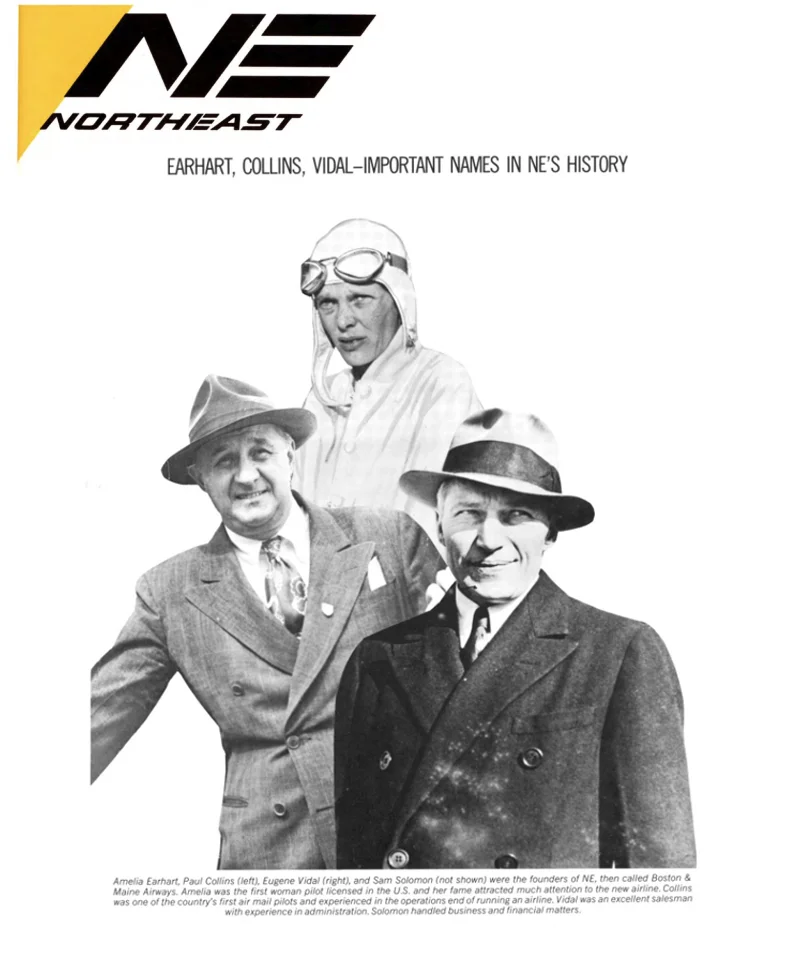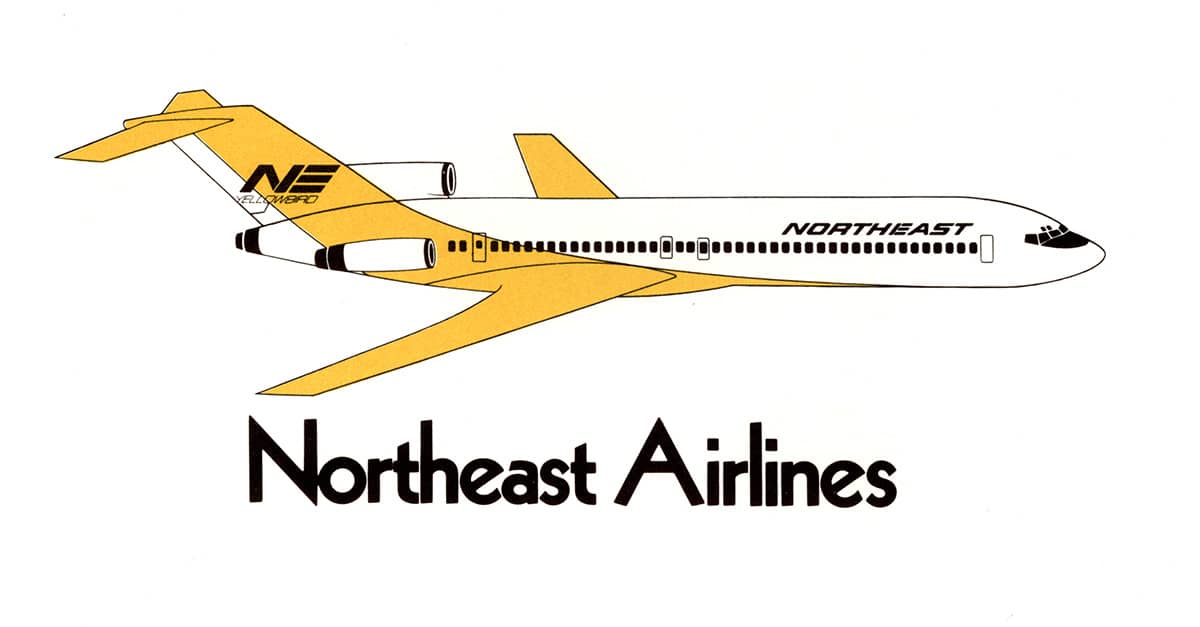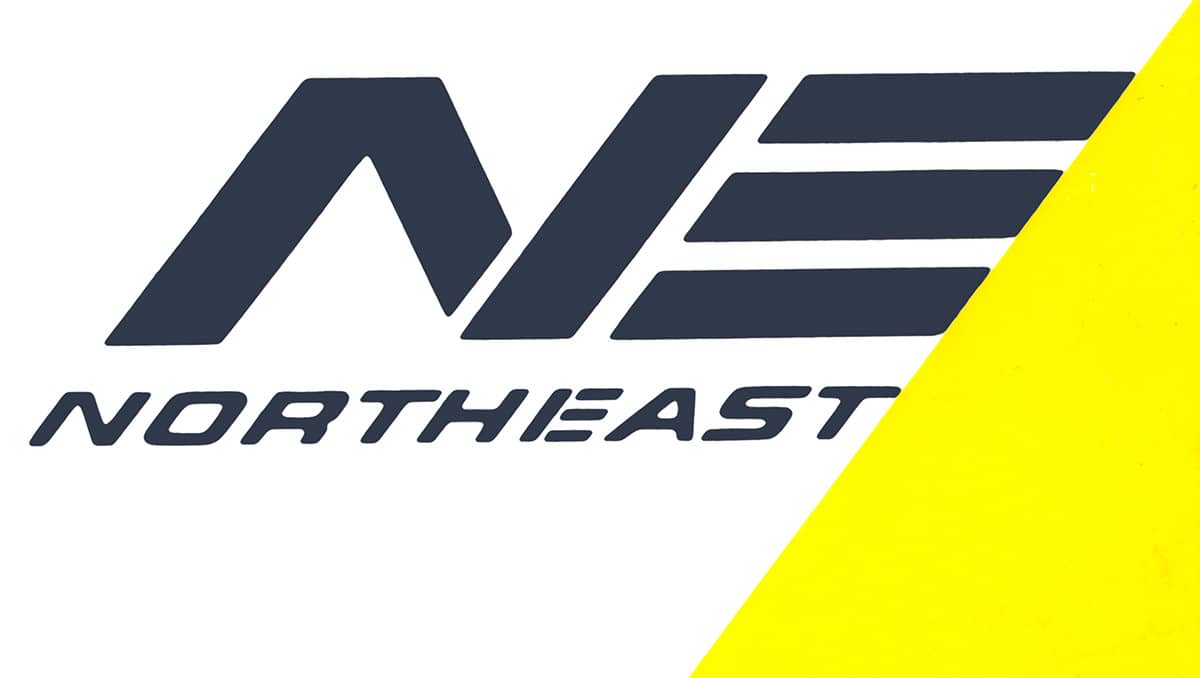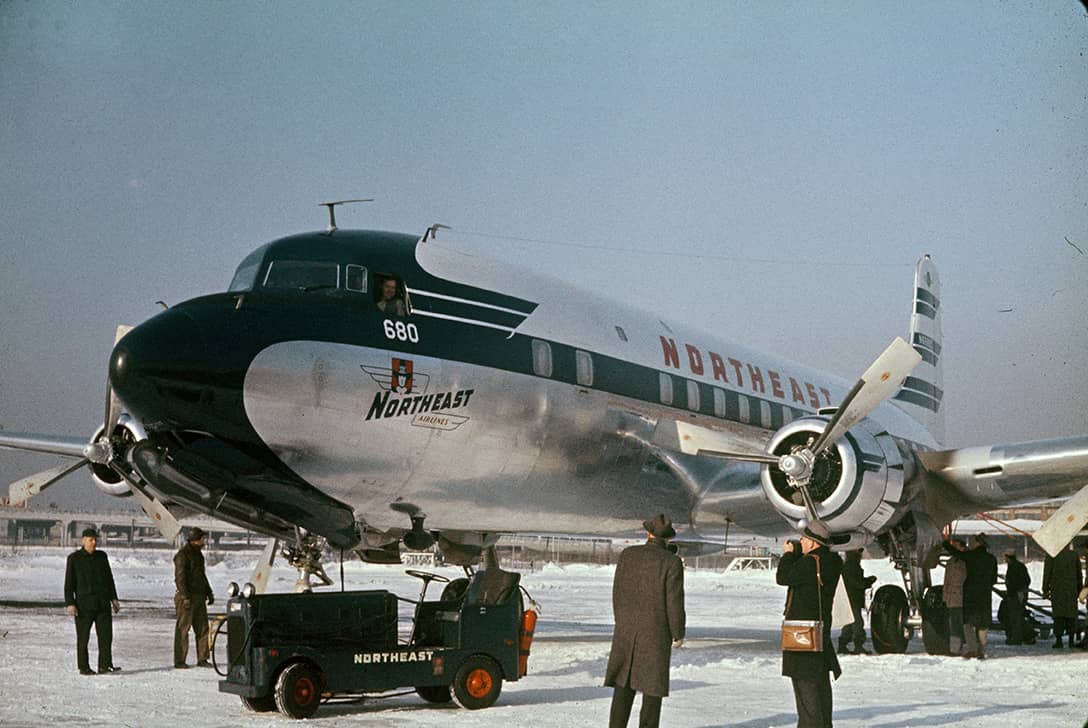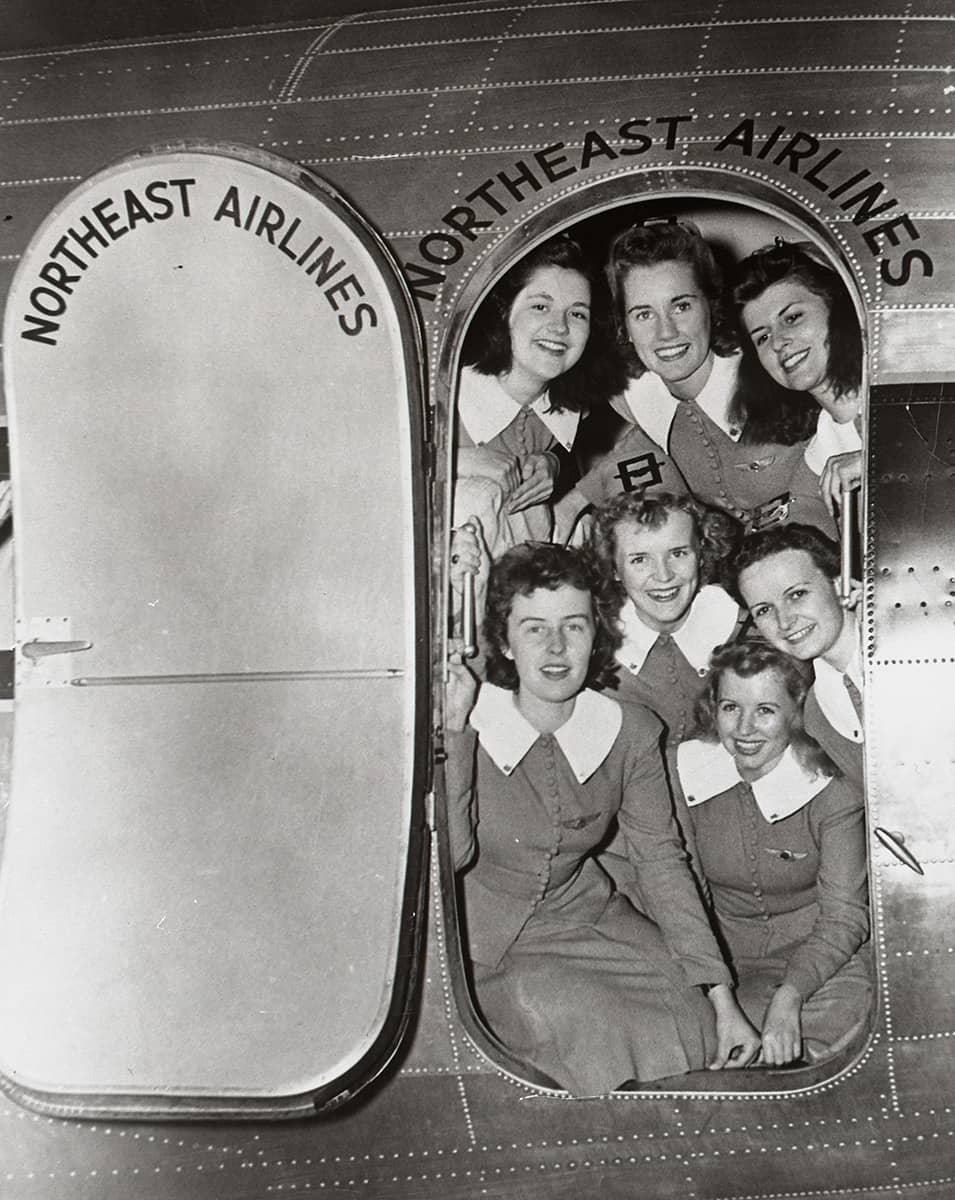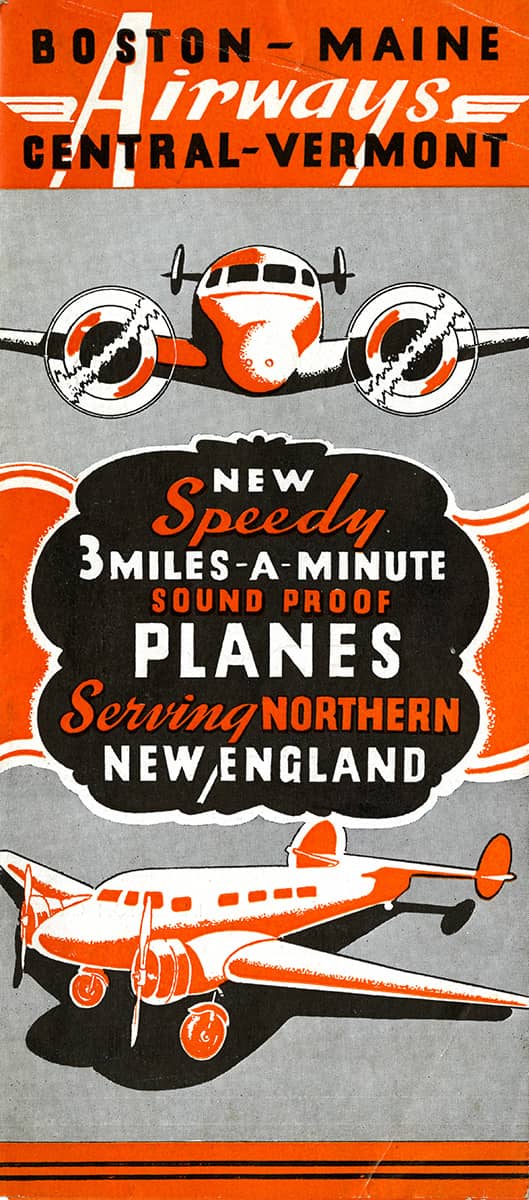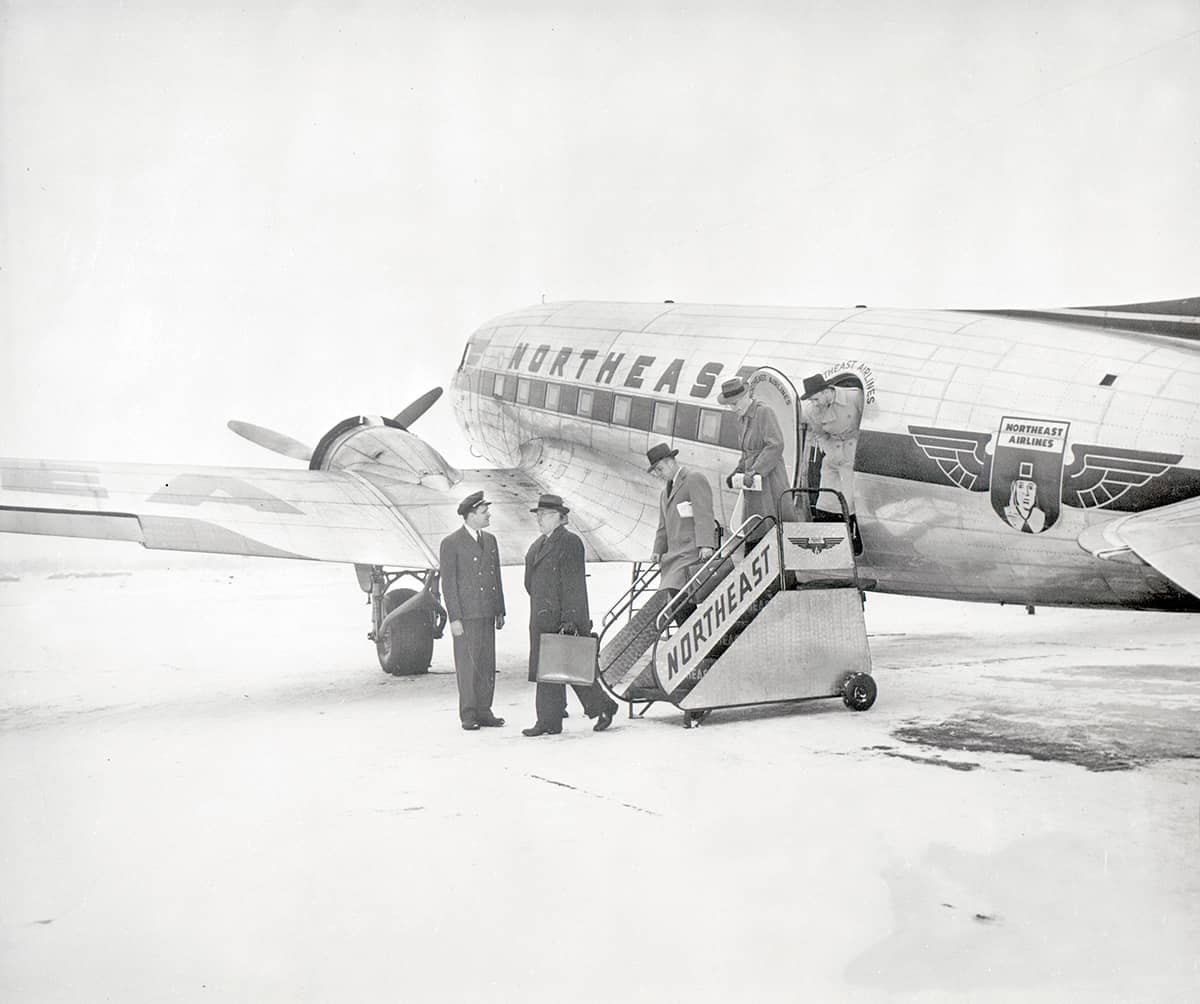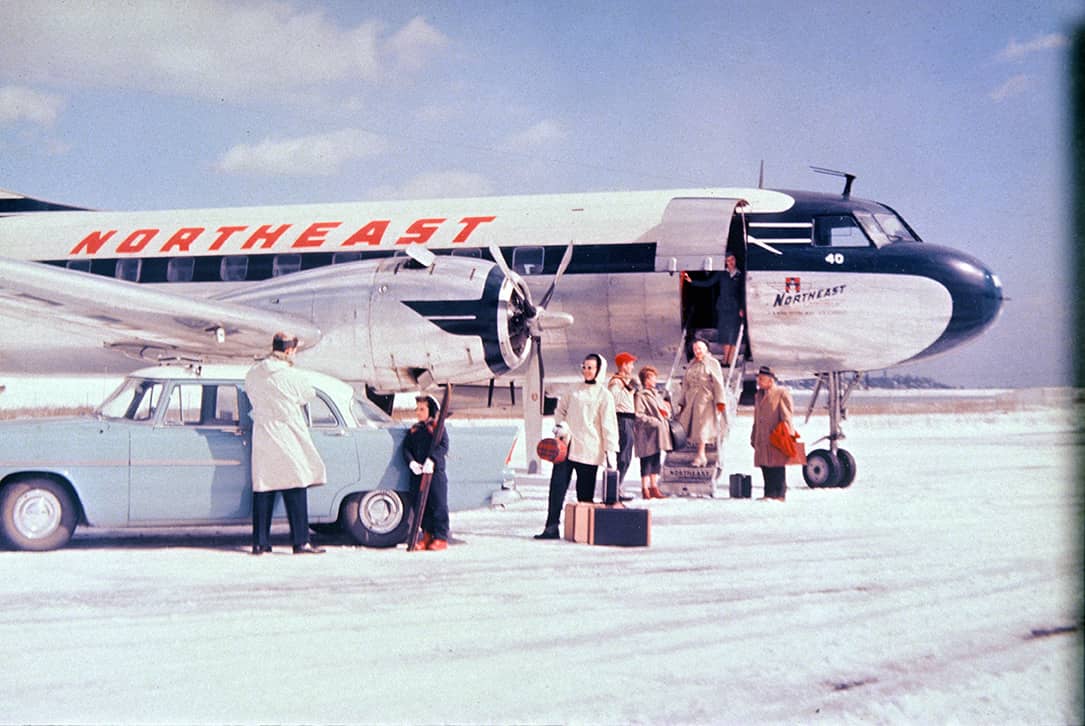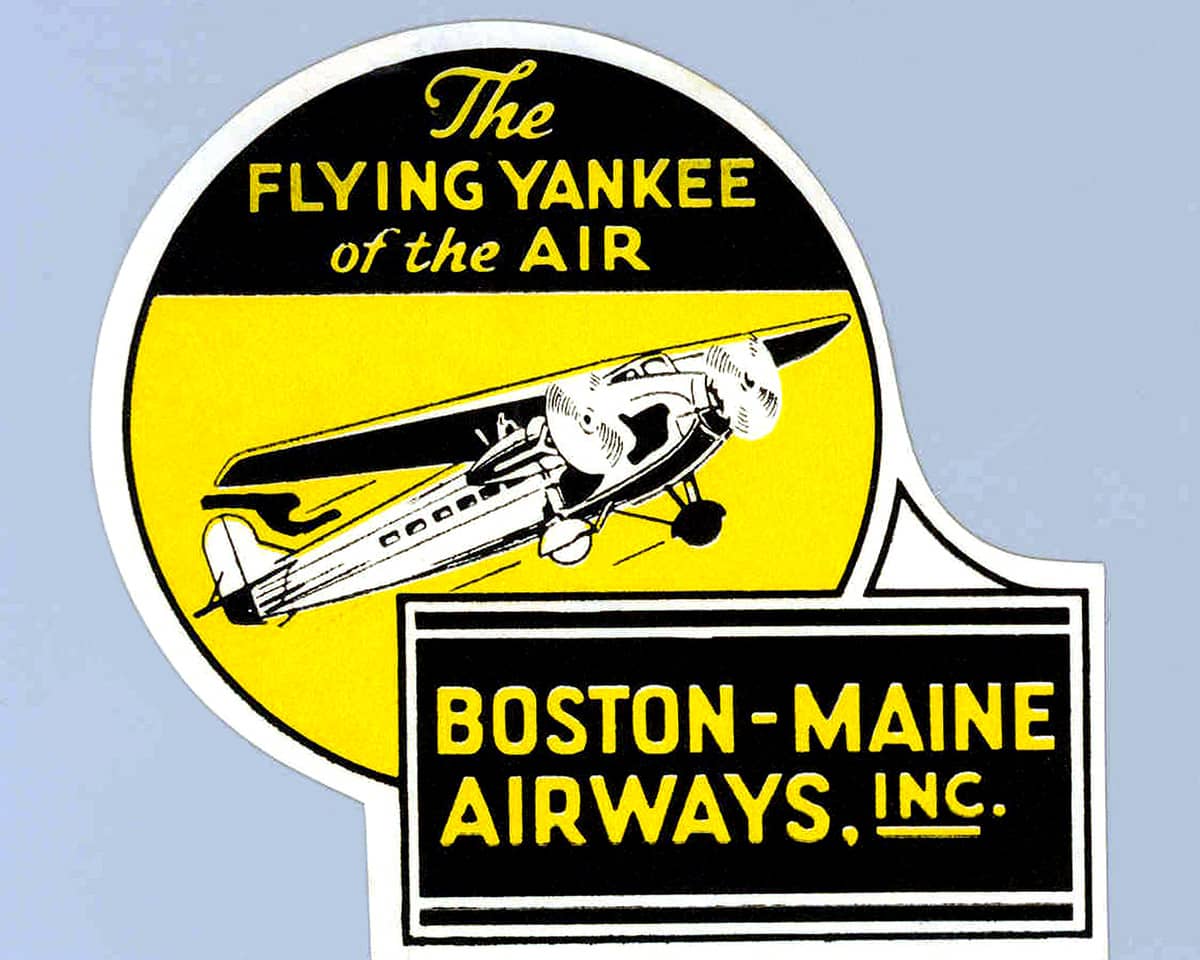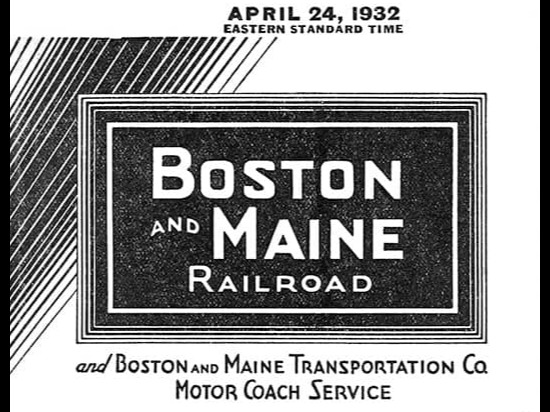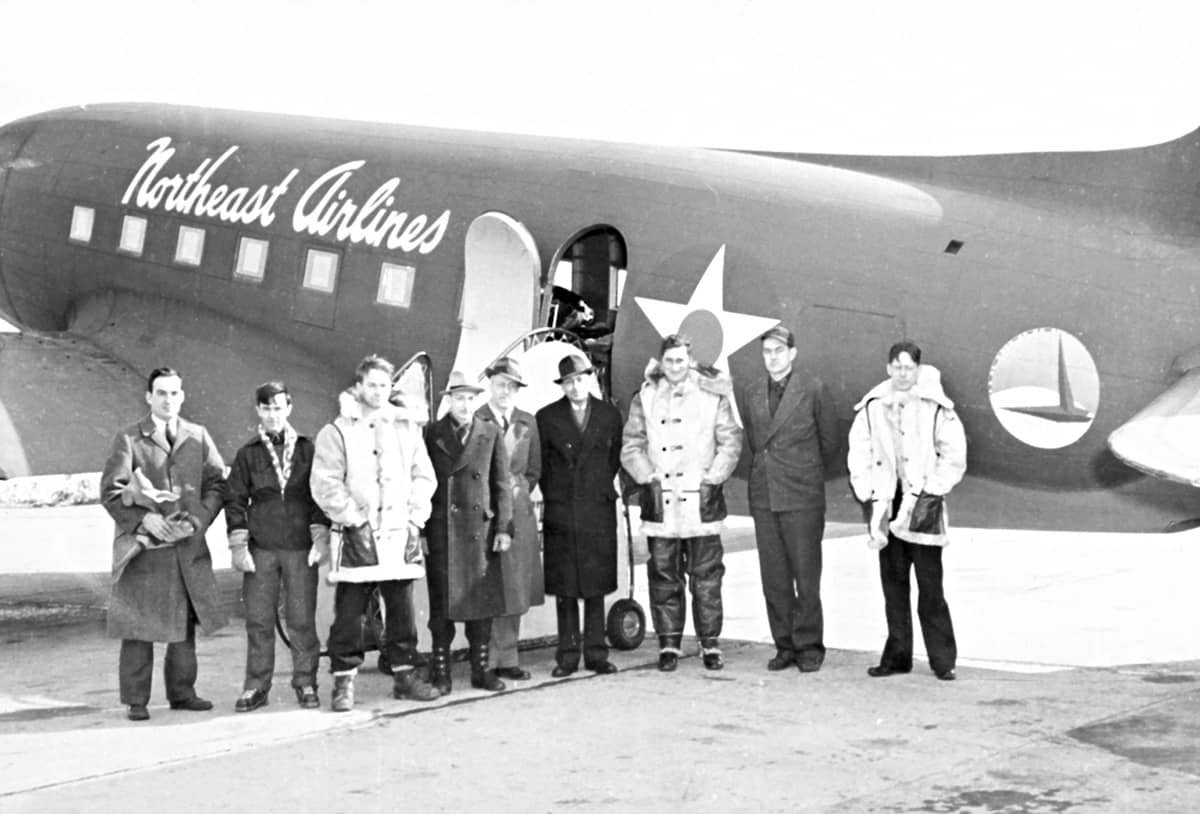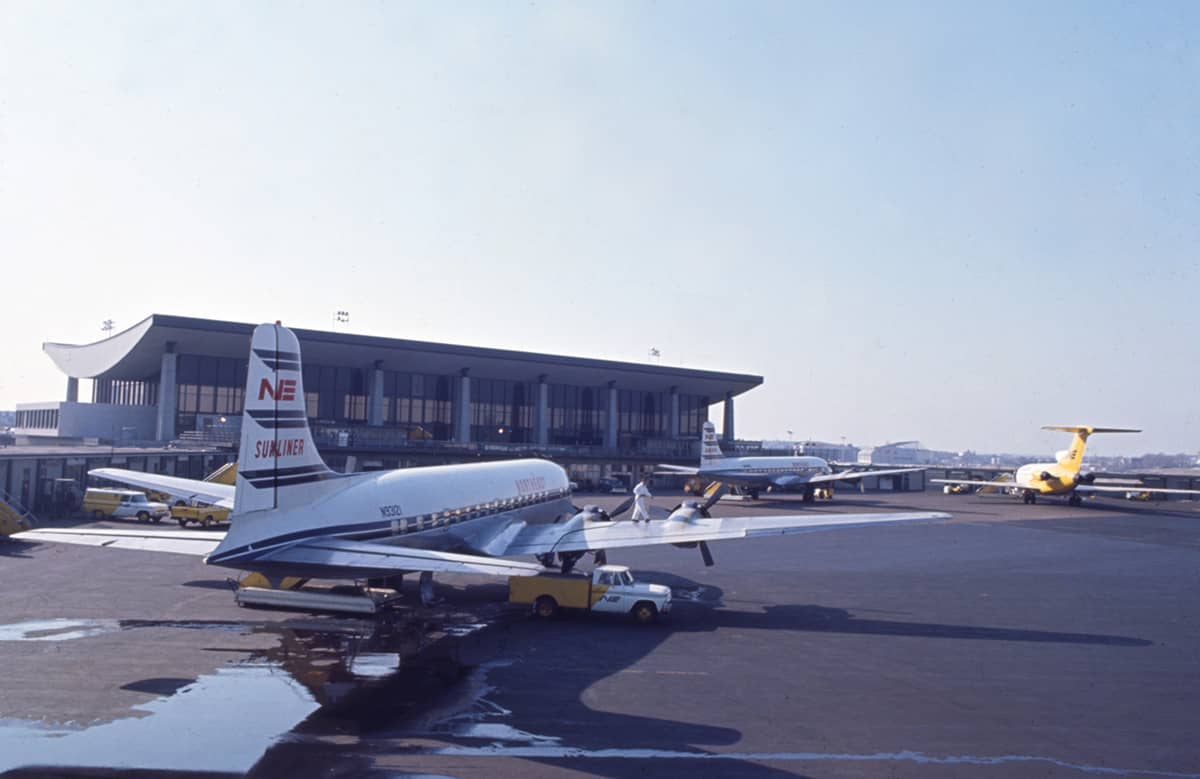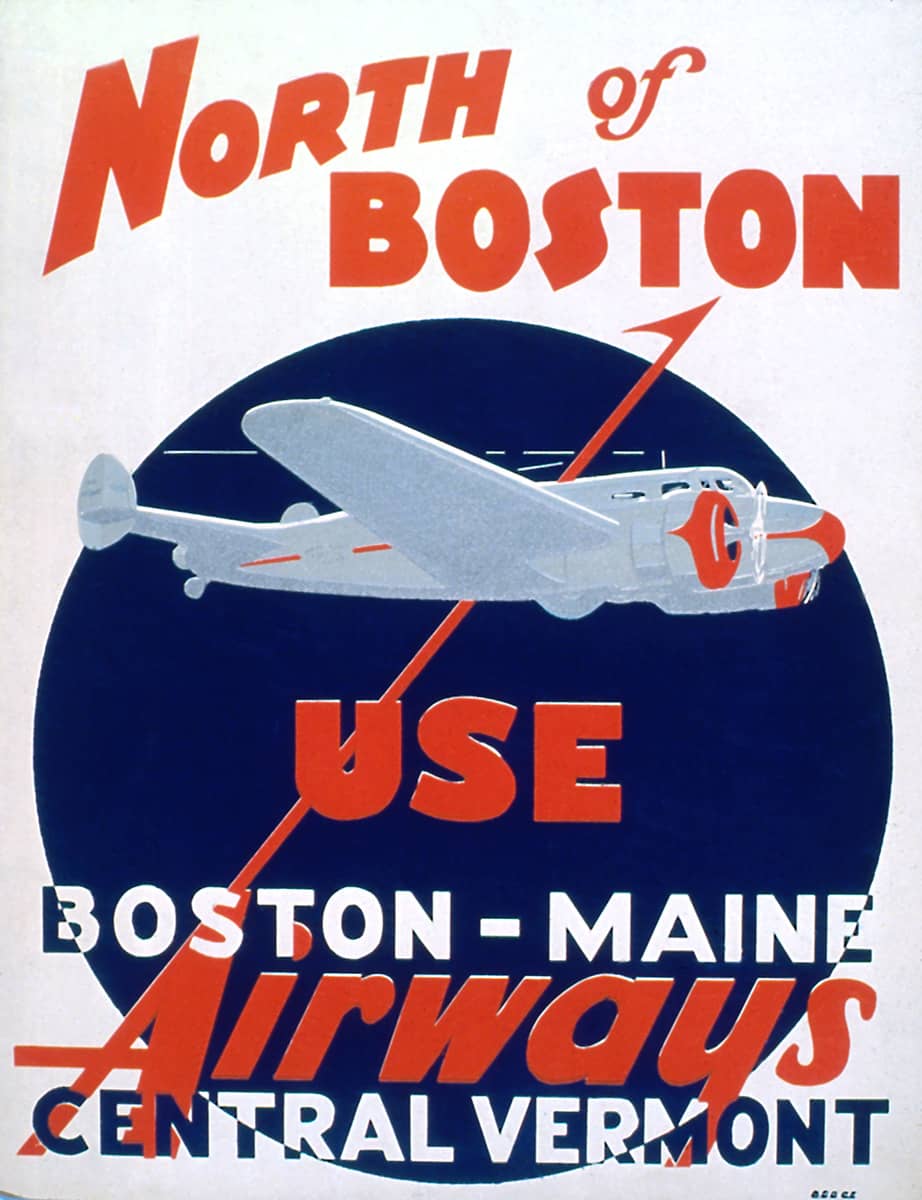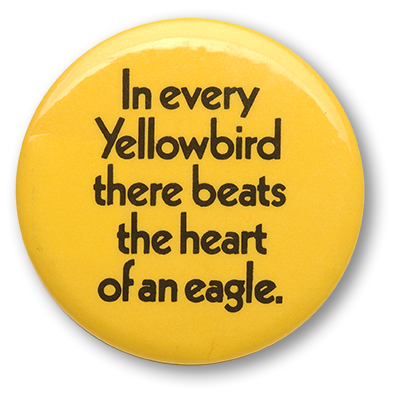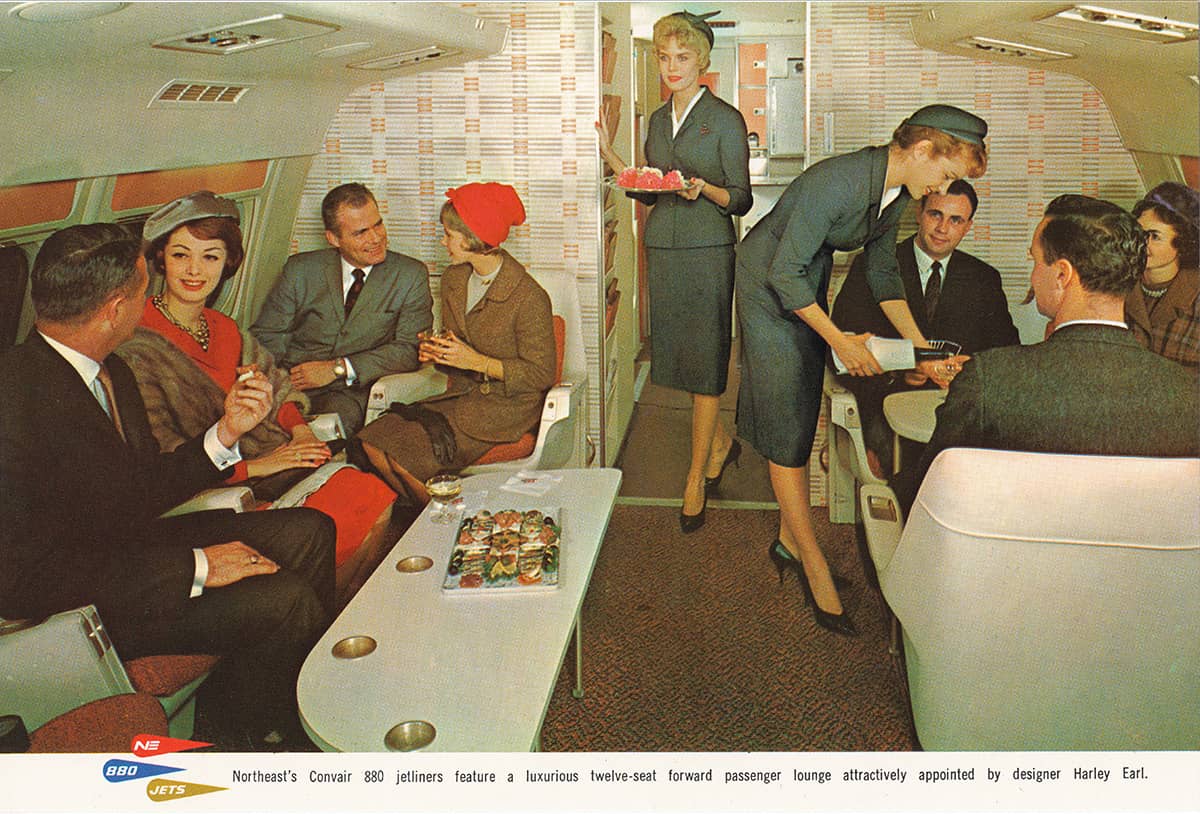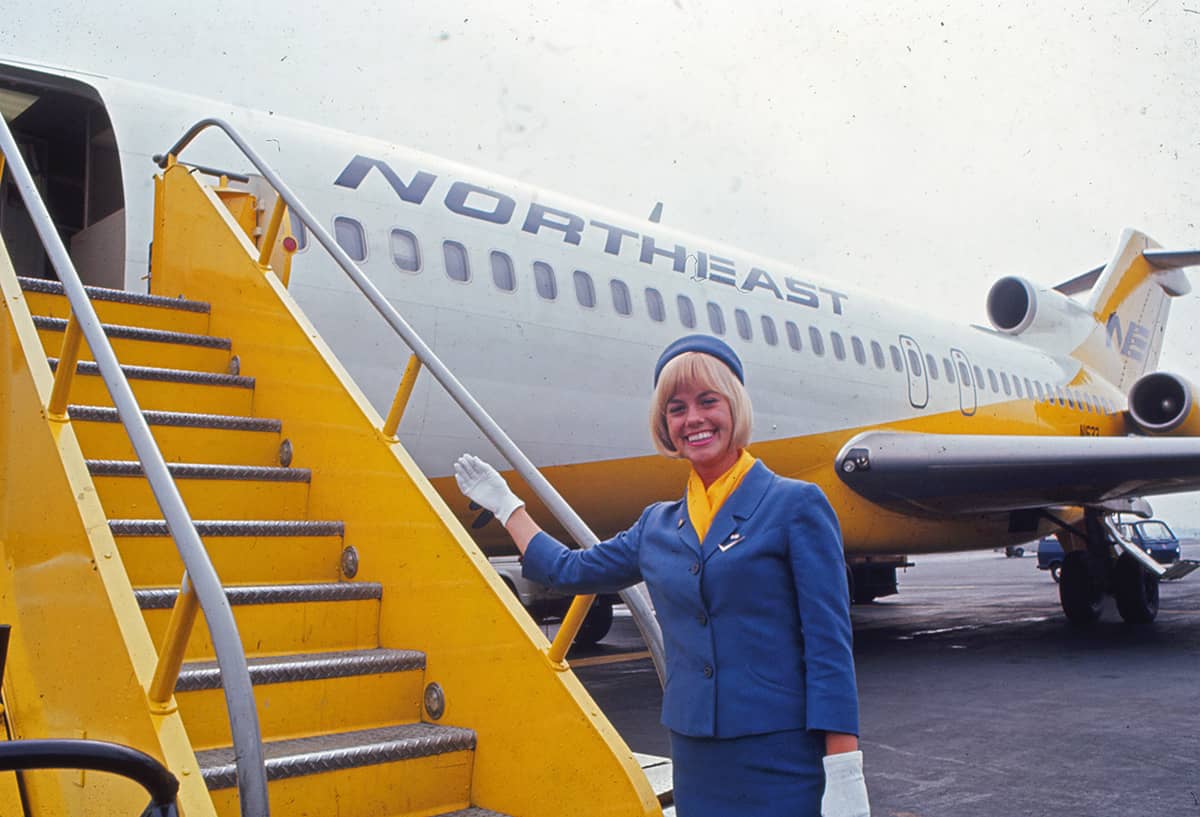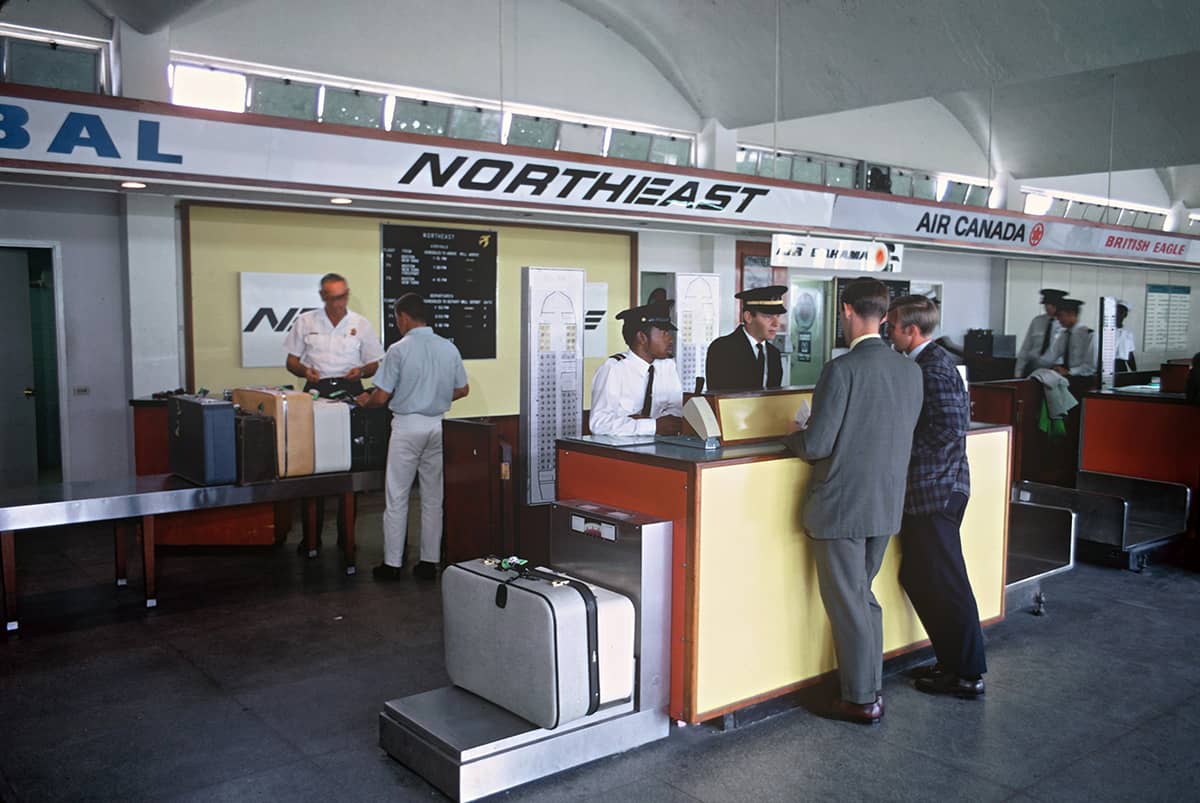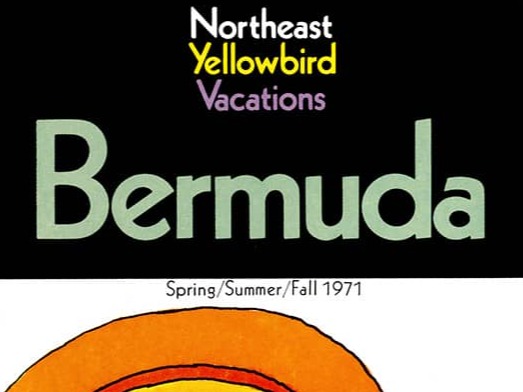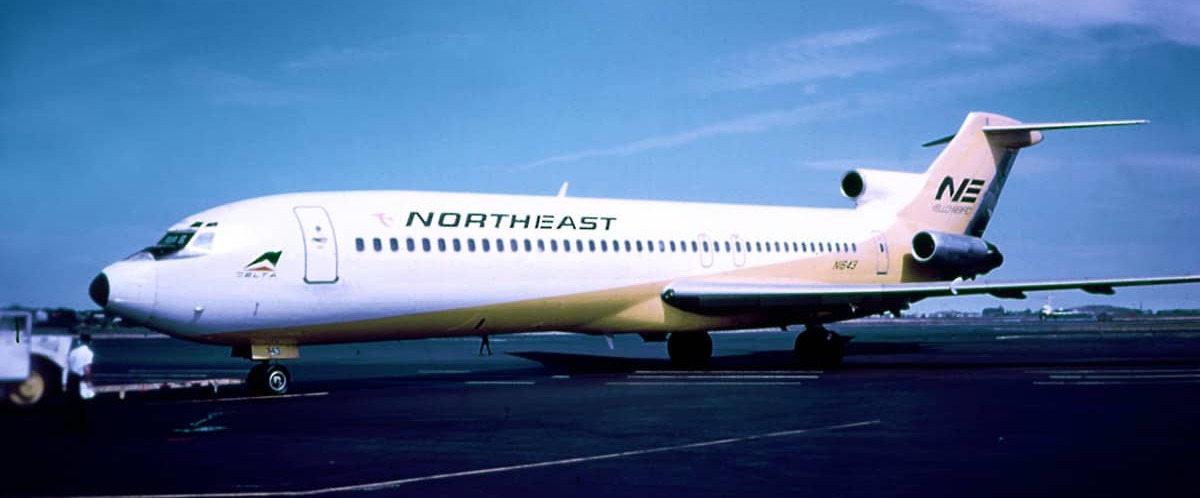
Northeast pioneered service from its Boston base throughout the New England states and into Canada in the 1930s. By the time Northeast merged with Delta on August 1, 1972, its famous "Yellowbirds" were jetting to Florida, the Bahamas and Bermuda, and across country to Los Angeles, California.
Learn more about Northeast's four decades of service. Check out resources below.
Lively 66-page commemorative booklet published by Northeast for its employees on July 31, 1972, the day before officially merging with Delta. Features many black & white photos of personnel, advertising and operations.
DOWNLOAD BROCHURENortheast Airlines' roots go back to the first attempt at establishing airline service in the New England states north of Boston, Massachusetts. Local railroads were seeking to participate in this new, growing form of transport. Boston and Maine Railroad, in partnership with the Maine Central Railroads, formed a subsidiary called the Boston-Maine Airways in July 1931.
Entire airline operated under contract by Pan American Airways, or "Pan Am". Beginning on August 1, 1931, Pan Am Fokker F-10A planes flew between Boston and Bangor, Maine. From Bangor, Pan Am flew Sikorsky S-41B flying boats to Halifax, Nova Scotia, due to the lack of suitable landing fields.
Just two months later, on September 30, the airline ceased operations. One of the Sikorsky planes had crashed in Massachusetts Bay on August 27, 1931, closing this experimental chapter of Northeast's history.
In 1933, Boston and Maine Railroad again formed a Boston-Maine Airways subsidiary, which started service on August 11, 1933, from Boston to Portland and Bangor, Maine, using eight-passenger Stinson T planes. The fare from Boston to Bangor cost $23 round-trip.
The carrier's early flights were operated under contract by National Airways, whose founders included Paul Collins, one of the country's first airmail pilots; Samuel J. Solomon, a pioneer airport operator; Eugene Vidal, a West Point graduate; and Amelia Earhart, the first woman to fly solo across the Atlantic.
National Airways made a similar operating agreement on October 27, 1933, with Central Vermont Airways, founded by the Central Vermont Railroad (owned by Canadian National Railway). National Airways coordinated the two railroad-sponsored airlines as one, hyphenating the two railroad names and issuing joint timetables and fares. Central Vermont's route extended from Boston to New Hampshire and Vermont, and on March 20, 1934, to Montreal, Canada.
In 1937, Boston and Maine purchased National Airways' assets, including its airmail contract, and in November 1940, renamed it Northeast Airlines.
